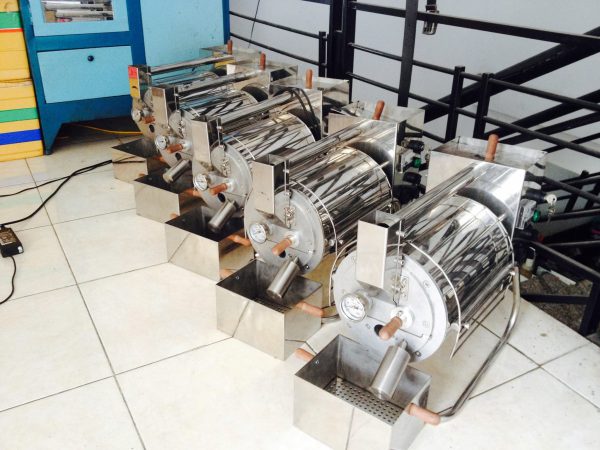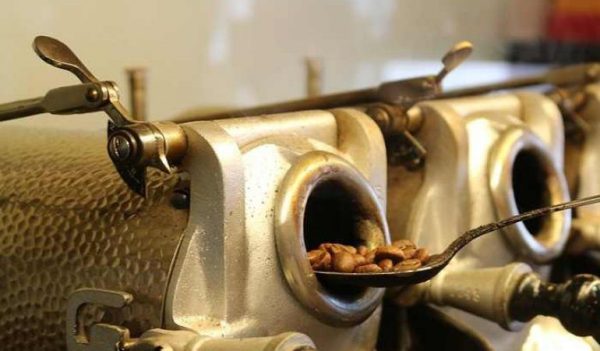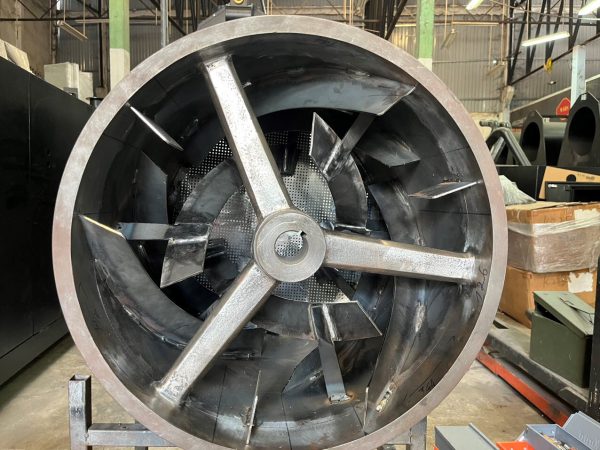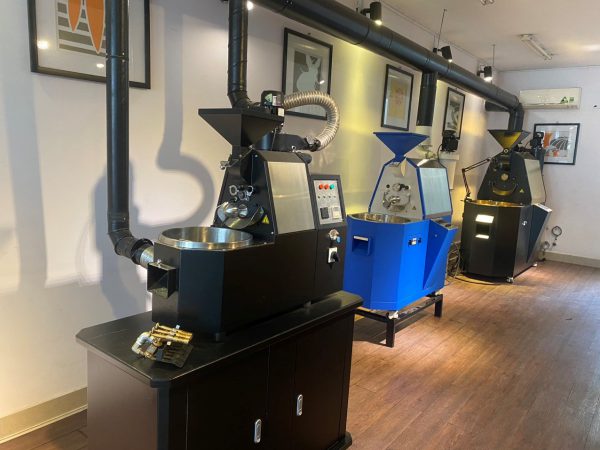LEARN ABOUT COFFEE DRUM MAKING MATERIAL
The drum of the roasting machine is also known as the roasting cage, the English name is drum. Its main task is to contain, stir the coffee and more importantly, to transfer heat to the beans for machines using direct heat transfer technology. Currently, roaster manufacturers around the world use 3 main types of materials to make roasting drums: Carbon Steel, Cast Iron and Inox (stainless steel).
To know more about the drum you are using, what material is it made of, is it optimized to be suitable for coffee roasting?
This article will give us an overview of blanking materials to add more knowledge to our selection.
The first is the stainless steel roasting drum: also known as stainless steel, which is an alloy of iron (the main components are Fe, C, Cr, Ni, N …).

– Advantages: Because it is stainless steel, stainless steel has good oxidation resistance (thanks to the Cr component), if it is focused on food safety, stainless steel is highly appreciated. In addition, stainless steel has high ductility and durability.
– Disadvantages: Because stainless steel is an alloy of iron containing many components, the expansion of each component is different, so the thermal expansion of each component is different, leading to stainless steel being easily deformed. In addition, stainless steel absorbs heat quickly but retains heat poorly (when roasting coffee, it is easy to burn the edges, the condition in the coffee beans is alive, the outside is burnt).
Stainless steel has such disadvantages, so it is not suitable for roasting drums (can be applied to super mini roasters).
Next is the cast iron drum: The main ingredient in cast iron is Fe and C alloy, in which carbon has a composition greater than 2.14% and includes impurities Mn, Si, P, S.

– Advantages: Good heat retention, slow heat transfer against edge burning, overcoming the situation that the inside of the seed is still alive outside of ripening (advantage for large drums). Very good castability, easy to work with, and resistant to wear. Because of its ease of processing and low cost, many roaster manufacturers use cast iron to make large capacity roasting drums.
– Disadvantages: Because cast iron retains heat well, heat transfer is poor. When heating a roasting drum made of Cast iron to the same temperature as stainless steel, we have to spend a lot more energy. Because cast iron retains heat so well, we have difficulty in increasing and decreasing the drum temperature, it is very difficult to roast according to the profile. The impact resistance of cast iron is low.
Therefore, cast iron is suitable for the production of large industrial roasters, not suitable for small machines, roasting high-class coffee.

Carbon steel drum: It is a Fe – C alloy in which carbon accounts for the proportion from 0.02 – to 2.14%. High heat resistance, ductility, strength and impact resistance.
– Advantages: the ability to transfer heat and retain heat of Carbon Steel is moderate. Carbon steel has a high melting point, so it has little expansion and deformation because of heat, and has high strength. The thermal acceleration of carbon steel is small (easy to increase and decrease heat) so it is suitable for high-class coffee roasting
– Disadvantages: Carbon steel is difficult to fabricate. The cost of this material is relatively high, making it difficult to process for large-capacity roasting drums.

Obviously, carbon steel is a harmonious balance, having all the advantages of both stainless steel and cast iron. This material absorbs heat not as quickly as stainless steel and retains heat not as long as cast iron. Not only that, the durability and service life are better than cast iron, less thermal expansion, and the drum is not deformed during use.
Clearly analyzing each important element of the material to be most suitable and effective for the roasting process, MARS ROASTER always recommends customers to use carbon steel roasting drums to be both effective in the roasting process, Save time and money for your business model.
MARS will soon have more detailed articles about the structure of the roasting drum so that everyone can better understand and make the right choices for their roaster.


